

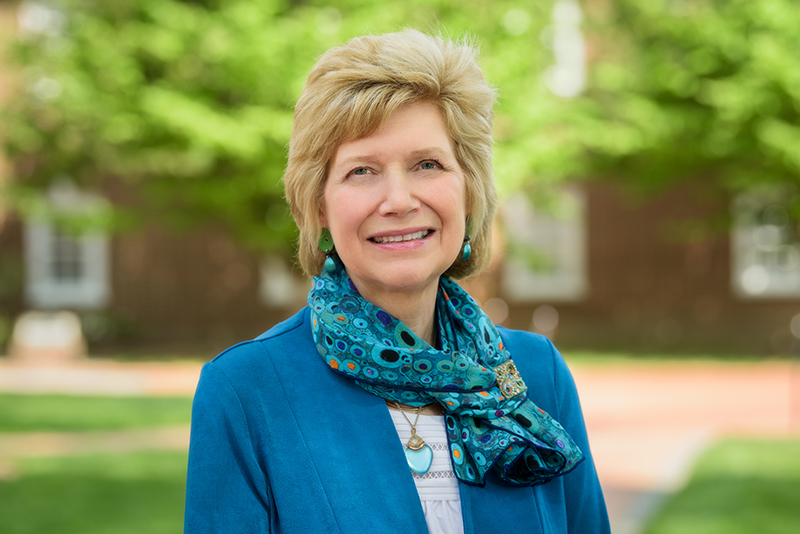
Debra Hess Norris chosen for UD's highest faculty honor
Photos by Evan Krape and courtesy of Debra Hess Norris May 15, 2018
World-renowned conservator is 2018 Alison Award winner
Don’t put grandma in the attic.
This request applies to your flesh-and-blood, three-dimensional grandma, of course. But when University of Delaware Professor Debra Hess Norris makes that the title of one of her workshops, she is referring to the grandma in your photographs. Don’t put her in the attic, where heat, humidity, heavy boxes, squirrels and other perils will threaten her future.
These are words of wisdom from the Unidel Henry Francis du Pont Chair in Fine Arts, a world-renowned expert in photograph preservation and conservation whose counsel and assistance are requested often by some of the greatest museums on the planet. But even more, these are words that express her devotion to people — wherever she encounters them — and the things they treasure.
Norris has helped to safeguard a wide array of important materials, from glass plate negatives documenting Western exploration, platinum photographs by Gertrude Käsebier, Polaroid portraits by Andy Warhol and at-risk collections in museums, libraries, archives and historic sites worldwide, even an early photographic album of The Beatles, of whom she is as zealous a devotee as any on record. But she is just as committed to treating the charred, water-damaged photographs brought to her from a family that had lost three young boys and their grandmother in a house fire in rural Ohio.
For her global influence, her ability to inspire excellence in student conservators and her commitment to the ideals of the University of Delaware, which she has served as professor, department chair, vice provost and now trustee since joining the faculty in 1982, Norris has been named the 2018 winner of the Francis Alison Faculty Award, the University’s highest competitive honor for faculty.
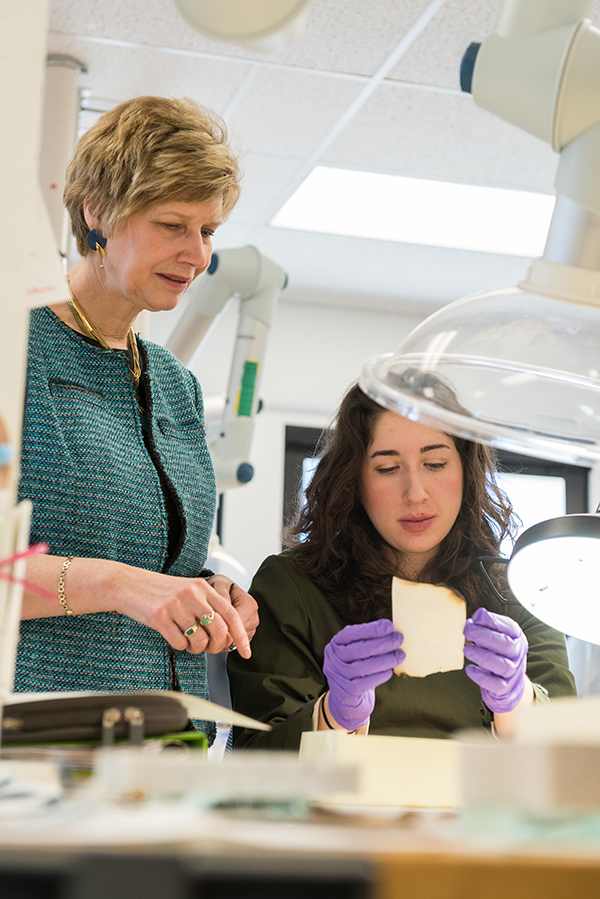
“Simply put, Norris’ impact on the field and in training the future generations of conservators is stunning,” said George Watson, dean of the College of Arts and Sciences, in his letter of nomination.
Developing the discipline
Norris earned her bachelor’s and master’s degrees at UD, studying art history, studio art, chemistry and art conservation, then invested her skill and passion in developing, training and nurturing a worldwide cadre of photograph conservators.
She has been a forceful advocate for the necessity of ethical consideration in all works of conservation, asking students and colleagues to search for personal or institutional biases that may color the work and distort the historic record. She sees honest, respectful collaboration as key to recognizing and addressing such blind spots.
“How do we bring people from all cultures into the conversation in developing best practices for the care of their own cultural material? Debbie is at the forefront of these conversations,” Adrienne Lundgren, a former student of Norris’ who now is senior photograph conservator at the Library of Congress, wrote in a letter of endorsement.
This commitment to respect for other cultures and integrity in those relationships is part of Norris’ lasting legacy in the field, many said, and one of many reasons she is a trusted partner around the world.
“She is the ‘go-to’ resource for training in our field, with curricula developed for students at all stages (from undergraduate to postdoctoral) and for practicing professionals at all levels of knowledge and achievement,” wrote Paul Messier of the Yale Institute for the Preservation of Cultural Heritage.
William “Bro” Adams, former chairman of the National Endowment for the Humanities, said he learned early in his tenure at the NEH that Norris was considered the leading authority on art conservation in the United States. That prompted him to visit the program directed by Norris that links the conservation work of the University with that of Winterthur Museum.
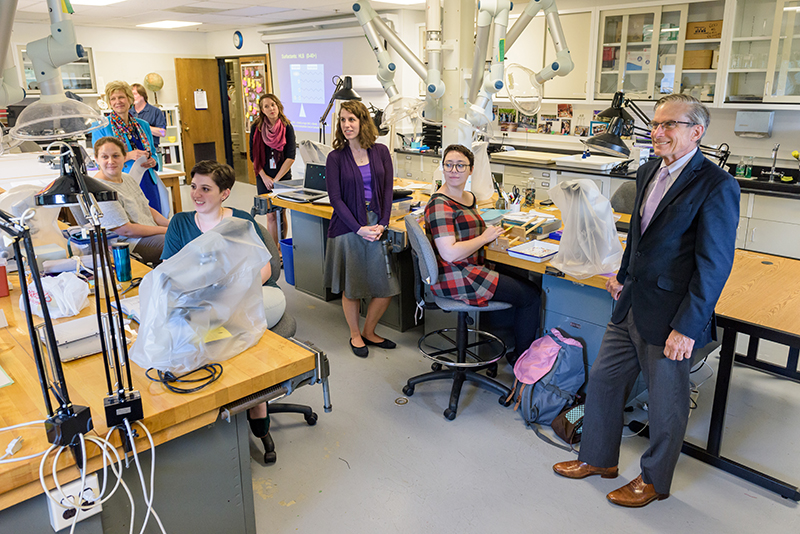
“The technical sophistication of the work was compelling, but I was especially struck by the quality of Professor Norris’ relationship with her students and by their enthusiasm for the work,” he wrote. “It was not hard to see why the program at Delaware is widely regarded as the best in the country, and it was not hard to see why Professor Norris is held in such high regard as its leader.”
When he consulted with Norris to find meaningful ways for the United States to strengthen cultural ties with Cuba, she went to the experts in Cuba to see what would be meaningful to them. New partnerships and projects emerged.
“Professor Norris led a delegation of Delaware graduate students and faculty to Cuba to learn about the preservation challenges the Cubans face with respect to their extraordinary art collections, including especially the remarkable photographic records of Cuban culture held by various cultural institutions in Havana,” he wrote.
Global connector
Letters describing Norris’ impact on conservation around the world arrived from many high-profile national and international institutions, including the J. Paul Getty Museum, the National Gallery of Art, the Smithsonian Institute, the United States Department of State, the Museum of Modern Art, the Mellon Foundation and the Royal Danish Academy of Fine Art, to name a few.
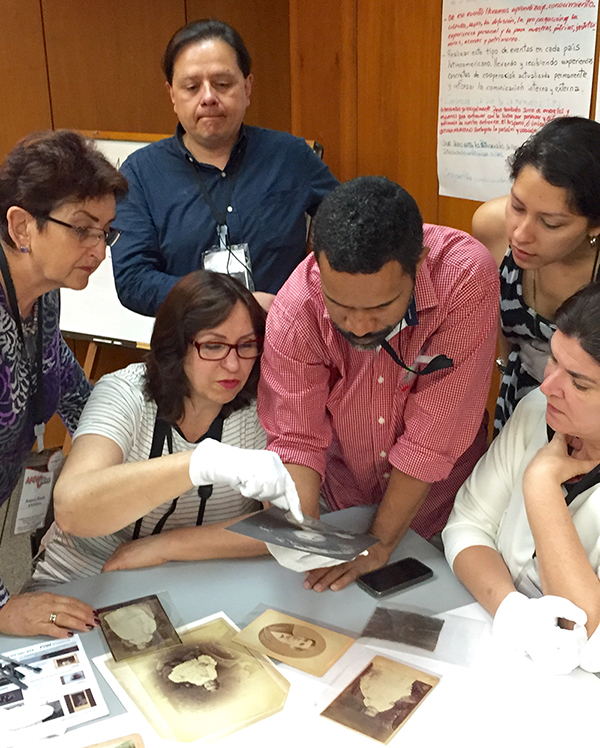
Many letter writers were students — past and present — writing to express their debt to Norris, who has taught more than half of the photograph conservators in the United States.
“Most photograph conservators worldwide have, in some way, been mentored by Professor Hess Norris,” wrote Shannon A. Brogdon-Grantham, photograph and paper conservator at the Smithsonian.
That helps to streamline connections when they are most needed, said Andrew Robb, head of special format conservation for the Library of Congress and a 1994 graduate of the Winterthur/University of Delaware Program in Art Conservation (WUDPAC).
“In my work assisting with the recovery of photographs after the Great East Japan Earthquake of 2011, there was no faster way to establish my credibility in the area of photograph conservation than to say I had been her student,” Robb wrote.
She is known around the world not only because of her expertise, but also because she readily goes where she is needed — to India, Colombia, South Africa, Benin, Turkey, Lebanon, Israel, Iraq, Russia, to name just a few. And she welcomes these contacts, whether they are requests for information or guidance or invitations to speak, teach or assist.
Those face-to-face encounters help to build understanding and trust, even in extremely difficult corners of the world.
“As a teacher, Ms. Norris has no equal,” Robb wrote. “Both encouraging and demanding, she brings out the best in all her students, whatever their abilities and knowledge. In particular she helps conservators to become independent, to be able to complete complex and difficult tasks and to exercise considered judgment…. Since the early 1980s Ms. Norris has fostered our field from a tiny group of less than 10 people to an international community of hundreds.”
Norris has taught hundreds of workshops around the world and across the U.S. — and happily invests time in smaller groups and community organizations, too. “Don’t Put Grandma In The Attic” is an example of a talk she has given to community groups who just want to know how to keep their family’s treasured photographs safe for future generations.
Service in partnership
Despite a full calendar and frequent travel, she routinely takes on extra duty. She has served the University as an associate dean, vice provost of graduate studies, as a member of strategic planning committees and search committees and now represents the faculty on the Board of Trustees.
Does she ever say “No”?
“These opportunities are exciting,” she said. “You can’t spend too much time thinking about how busy you are or asking how you are going to get all these things done.”
So she typically says “Yes.”
“In doing so, you will meet and learn from inspiring people and create new opportunities for our students, alumna, faculty, staff and others,” she said.
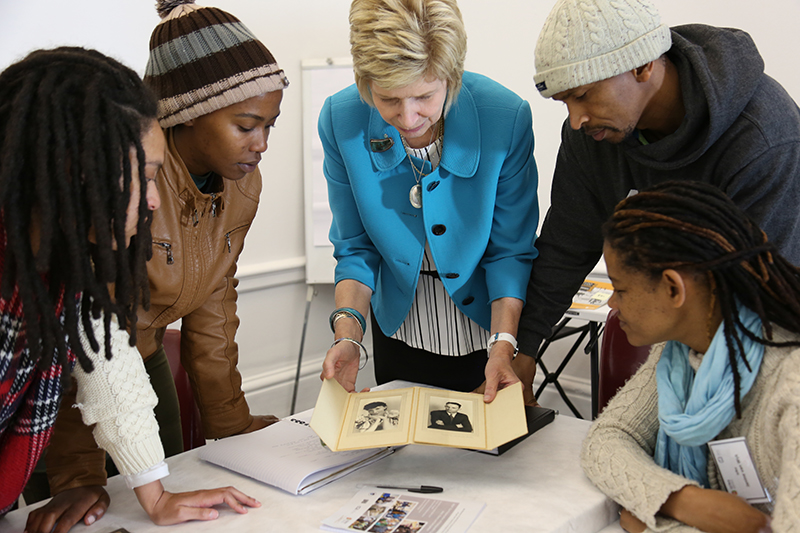
She is an intentional connector, something of a network hub — introducing this student to that conservator to that director to that foundation. Because her views are respected and credible, she works to raise awareness of needs, then helps raise the money and resources to meet them.
“My most rewarding projects are accomplished in partnership with others,” she said. “Preservation projects benefit from multiple perspectives and areas of expertise. No one can do it on their own. Empowering people to lead is so important.”
With the support of the Andrew W. Mellon Foundation, for example, Norris worked with the Getty Conservation Institute, the Metropolitan Museum of Art and the Arab Image Foundation to strengthen photograph conservation practice and awareness throughout the Middle East.
This network of organizations developed the Middle Eastern Photograph Preservation Initiative in the region that has trained more than 70 collection caretakers from Syria to Iraq, Morocco to Bahrain.
This summer she will teach a workshop for photograph collections across the United Kingdom and in October will teach in Beijing for caretakers of collections in China.
Photographs provide natural bridges between people, Norris said, even when they do not share language or other cultural ties.
“Weddings, family celebrations — everyone connects to those images,” she said. “And I believe our work in preservation strengthens cultural understanding and reconciliation. Photographs connect us in powerful ways. They document history and celebrate humanity.”
From ‘Help!’ to hope
Because she is a Beatles aficionado, she often incorporates song titles and lyrics in presentations she makes around the world—from “I’ve Just Seen a Face” to “Help!”
A line of John Lennon’s lyrics from “Imagine” is on a sterling silver bracelet she wears daily — a call to see beyond the status quo to a world of peace and unity:
“You may say I’m a dreamer, but I’m not the only one.”
Peace and unity are not realities for many around the world. Restoring traumatized cultures requires truth and justice, which can bring agonizing history to the fore. Difficult conversations arise when artifacts and images are encountered by those who lived their histories and still bear the scars and the consequences.
“You have to be totally honest about your feelings and temperament,” she said. “You can be in tears — and people connect to that, too.”
While building cultural bridges around the world, Norris has worked vigorously to open doors and welcome those who might not otherwise have gained entry to the field or even considered it as an option.
She led a consortium of national service organizations in the Historically Black Colleges and Universities (HBCU) Photograph Preservation Initiative, addressing the endangered archival photo collections held at many of those institutions, while also providing training and networking opportunities for students and others at those schools.
“The expert letters in Norris’ dossier provide unequivocal praise for her work in advancing the field of preservation studies with tireless energy and dedication,” Watson said. “As her numerous high-profile publications indicate, Norris works in easy collaboration with others, not only to advance the field of photographic preservation, but also in the spirit of mentoring others along the way.”
Ingrid Bogel, recently retired from her role as executive director of the Conservation Center for Art and Historic Artifacts in Philadelphia, which has conserved such items as Bruce Springsteen’s lyric notebooks, Frank Lloyd Wright’s architectural drawings and other high-value art and documents, ended her letter of endorsement with a note about Norris’ impact on other professionals.
“It is not at all unusual to receive an email in the wee hours of the morning regarding a creative solution to a conservation issue or an idea for advocacy to a new audience,” Bogel wrote. “Her enthusiasm is infectious and inspires others to do their best work, whether it be treating a work of art, providing preservation assistance, reaching out to advocate on behalf of endangered artifacts or responding to a cultural disaster…. She represents the best of us in her humanity, her humility and her selflessness.”
Those traits produce what is perhaps the most powerful result of conservation work — the impact it has on those whose lives are represented in the objects and images.
Ricky Harris expressed this as well as anyone when he encountered Norris’ generous and compassionate spirit a few years ago. It was a few days after Christmas in 2014. Harris had just lost his mother and three sons in a fire in rural Ohio. His best friend from high school, Michael Emmons, who was a UD doctoral student in art conservation at the time, contacted Norris about how to treat 200-plus photographs that had been rescued from the fire.
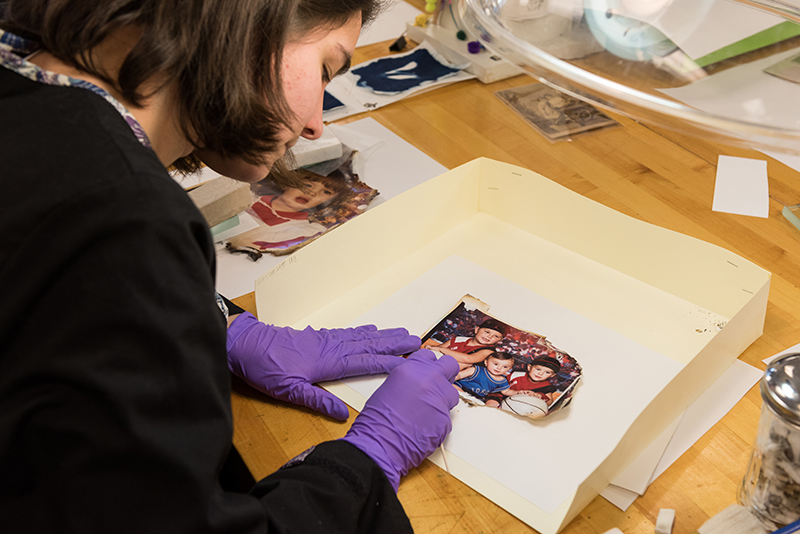
Norris invited Emmons to get the photographs to Winterthur, where she was about to teach a “photo block” session of the Winterthur Art Conservation training program. She incorporated Harris’ photographs in the block, teaching students how to analyze and treat them. Soon afterward, the restored photographs and digital copies were returned to Harris and his family in Ohio.
“We’re pretty blown away by the fact that somebody wants to take interest and care about this tiny little family,” Harris told a University writer while the work was underway. “You tell them that me and my family, my whole family -- we love them all.
“There’s no words to say how appreciative we are.”
There are no photographs to do that justice either.
Let the Francis Alison Award do the talking.
Online Extra
See Debra Hess Norris’s TEDx talk.
Contact Us
Have a UDaily story idea?
Contact us at ocm@udel.edu
Members of the press
Contact us at 302-831-NEWS or visit the Media Relations website

